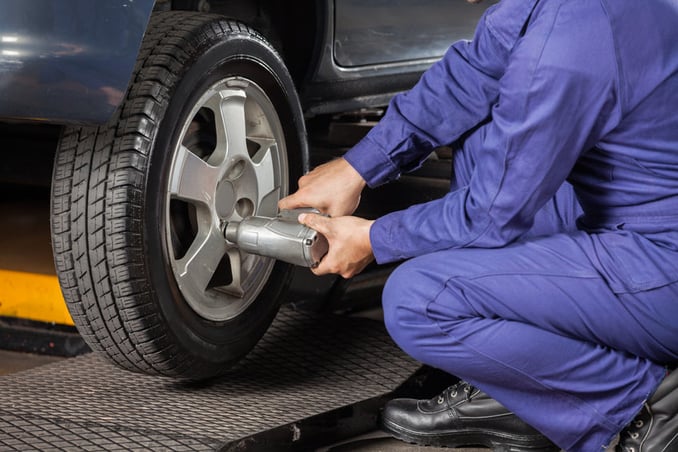Tire Service: The Effect of Climate Condition
When it comes to ensuring optimum efficiency and safety and security on the road, recognizing the impact of weather conditions on tire service is crucial. GMC Tire Service. In this discussion, we will explore the detailed connection between weather conditions and tire service, shedding light on the relevance of weather-specific tire upkeep methods and considerations.
Heat and Tire Efficiency
When exposed to high temperatures, tires experience adjustments in efficiency that can significantly affect lorry safety and security and handling. The heat produced from extended driving or heat problems causes the tire rubber to soften, bring about lowered step life and raised wear. As the rubber comes to be softer, the tire's grasp on the roadway decreases, impacting braking distances and overall traction. In severe instances, too much warm can also cause tire blowouts, presenting an extreme safety and security threat to the lorry and its residents.

Cold Weather Results
Cold weather problems can have a significant effect on tire efficiency and safety and security. In cold climate, tires might likewise shed air pressure a lot more swiftly, which can influence handling and gas performance.
To alleviate the results of chilly weather on tires, it is important to on a regular basis inspect tire stress and inflate them to the manufacturer's recommended degrees. Using winter or all-season tires developed for cool climate conditions can additionally improve grip and hold on icy or snowy roadways. Proper tire upkeep, consisting of regular inspections for wear and damage, becomes also extra crucial during cooler months to ensure optimal efficiency and safety.
Rainy Issues Impact
Tires with damaged footsteps are a lot more vulnerable to hydroplaning, where a layer of water constructs up between the road and the tire surface area, leading to loss of grip. To fight this, motorists need to on a regular basis examine their tires for ample walk depth and consider investing in tires specifically developed for wet conditions.
Additionally, rainy climate can additionally decrease visibility, making it challenging for vehicle drivers to see the road ahead clearly (GMC Tire Service). In such problems, it is necessary to change driving speeds accordingly and maintain a safe complying with distance to enable sudden stops. Properly filled with air tires can additionally help in preserving control on damp roadways by offering better handling and grasp
Snow and Tire Safety
Snow-covered roadways position distinct difficulties for drivers, stressing the significance of proper tire choice and maintenance. When driving in snowy conditions, having the right tires can make a considerable distinction in safety and efficiency. Winter months tires are developed with special rubber substances and tread patterns to give better grip on snow and ice compared to all-season tires. The deeper footsteps and sipes of wintertime tires assist grip the road much better, minimizing the risk of gliding and sliding.

Additionally, vehicle drivers need to think about mounting tire chains in severe snowy problems. Tire chains provide extra grip by grasping the snow and ice, improving stability and control. It is vital to follow supplier directions when setting up and utilizing tire chains to avoid damages to the tires and car (GMC Tire Service). By choosing the right tires, preserving proper inflation, and considering additional grip aids like tire chains, motorists can improve their security when browsing snow-covered roads.
Weather-Related Tire Maintenance
Weather-related tire maintenance includes a variety of practices intended at making certain optimal tire feature and durability in different weather condition scenarios. One crucial element of weather-related tire maintenance is tire stress law. Evaluating tire tread routinely gmc tire service and changing tires when step wear gets to a particular depth is essential for keeping grip and stability in adverse weather condition.
Conclusion
In conclusion, climate conditions have a substantial influence on tire efficiency and safety. From warmth affecting tire pressure and put on to cool weather condition decreasing grip, it is essential to think about the climate when keeping and utilizing tires.
In this conversation, we will discover the detailed partnership between weather condition problems and tire service, losing light on the value of weather-specific tire maintenance practices and considerations.
